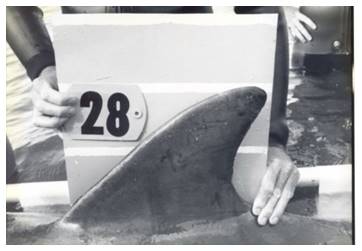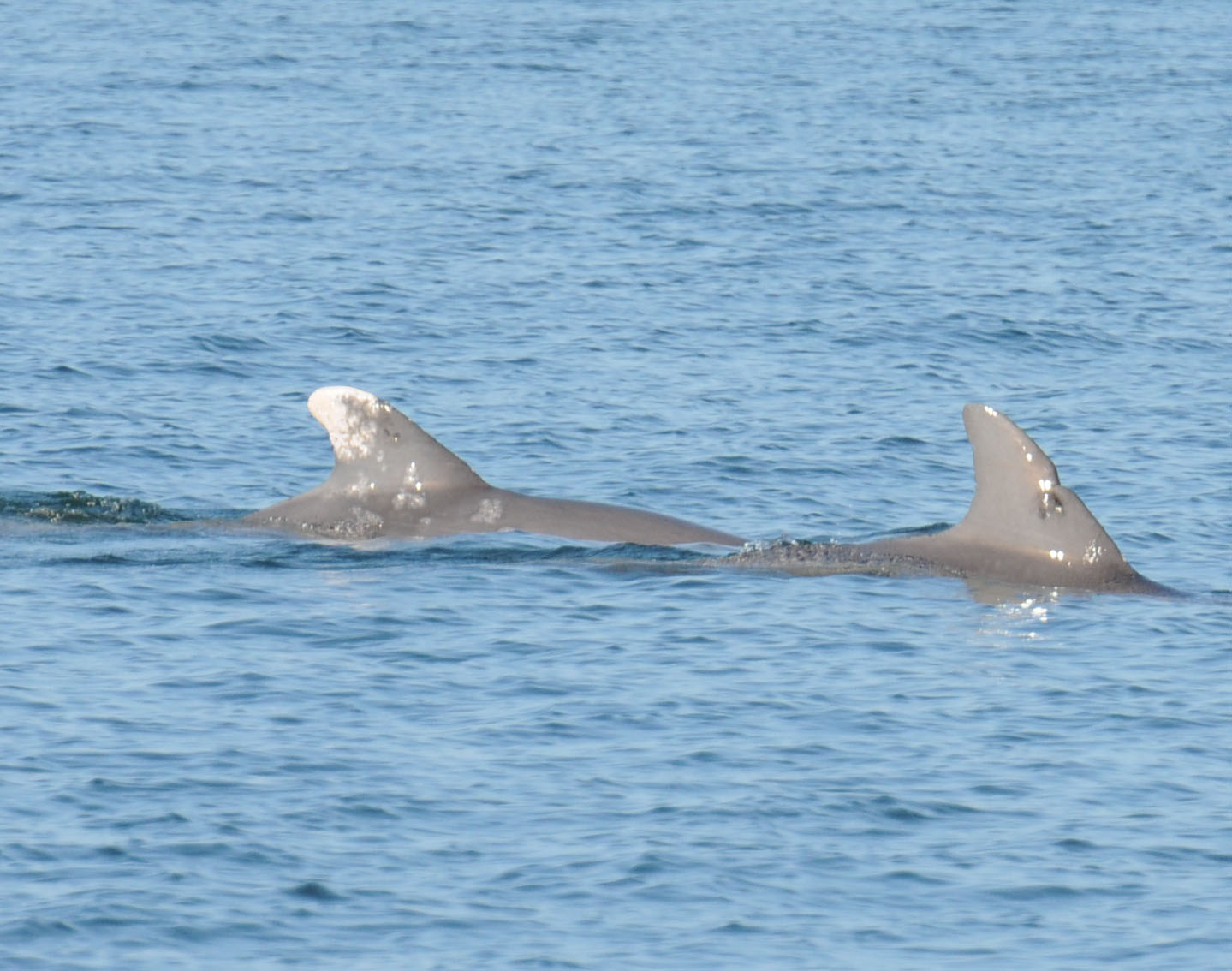Dolphin FB28
Stats
Name: Fb28
Sex: Male
Age: Born 1965. Died 2015.

A Dolphin’s Life
On the evening of 17 October 2015, the decomposed and shark-scavenged carcass of long-term resident male bottlenose dolphin FB28 was recovered by Mote Marine Laboratory’s Stranding Investigations Program from a canal near the southern end of Longboat Key. At 50 years of age, FB28 was the second-oldest male Sarasota Bay resident dolphin at the time of his death. He was first identified in March 1971, during a pilot dolphin tagging study — the precursor to the Sarasota Dolphin Research Program, which was based at Mote Marine Laboratory. Over the ensuing 44 years, we sighted him more than 500 times.
FB28 ranged from southern Tampa Bay through Sarasota Bay, but spent most of his time in the northern portion of this range. He was seen with more than 300 different dolphins over the years. As is the pattern for adult males in Sarasota Bay and elsewhere, he was closely associated with several other males in strong pair-bonds, but he outlived each of them. In his later years, he was seen on occasion with the oldest male resident, F154, also known from the pilot tagging study.
FB28 was confirmed through paternity testing to have sired at least two calves, and probably a third, all with the same female, known as Pecan Sandie, a seasonal visitor from Tampa Bay. Although Pecan Sandie disappeared in 2010 after having been observed for 20 years, all three of her calves continued to be seen during our monitoring surveys, providing a legacy for FB28.
In the latter decades of his life, FB28 contracted a fungal disease known as Lacaziosis (previously called Lobomycosis).  The coverage of much of his dorsal fin by this white, crusty, cauliflower-like skin disease made FB28 one of the most recognizable dolphins in the region. This disease was first described for bottlenose dolphins from a Sarasota Bay dolphin that was recovered and necropsied in 1970 by Blair Irvine and Randy Wells at Mote Marine Lab. Previously, it was only known from humans in Central and South America. Subsequently, this disease has been observed on cetaceans around the world. A doctoral student from the Medical University of South Carolina, Leslie Hart, based a portion of her dissertation on tracking the development of this disease on FB28 over time. Animals afflicted with this cutaneous disease can survive many years without obvious ill effects.
The coverage of much of his dorsal fin by this white, crusty, cauliflower-like skin disease made FB28 one of the most recognizable dolphins in the region. This disease was first described for bottlenose dolphins from a Sarasota Bay dolphin that was recovered and necropsied in 1970 by Blair Irvine and Randy Wells at Mote Marine Lab. Previously, it was only known from humans in Central and South America. Subsequently, this disease has been observed on cetaceans around the world. A doctoral student from the Medical University of South Carolina, Leslie Hart, based a portion of her dissertation on tracking the development of this disease on FB28 over time. Animals afflicted with this cutaneous disease can survive many years without obvious ill effects.
In his later years, FB28 began to interact with humans to a greater extent, patrolling around anglers in boats and on fishing piers and scavenging on discards. Although unnatural foraging behavior was observed infrequently by the SDRP (6 sightings), FB28 was often reported in close proximity to the Anna Maria City Pier by members of the public, particularly during spring months. In 2007, he became entangled in monofilament fishing line, with multiple strands stretched taut between his dorsal fin and his fluke. A rescue team from the SDRP was able to cut the line from a boat, using a long-handled cutting tool, and once cut, the remaining strands came off on their own.
“It’s very sad when one of our long-term resident dolphins dies, but we value the opportunity to know what happened to him at the end. FB28 was an important contributor to our understanding of coastal bottlenose dolphins lives, as he was one of the first dolphins to show us that these animals are resident to specific ranges they maintain over decades. We want to share his story to remind people of the challenges these animals face in the course of their everyday lives, both from human and natural sources,” said Randall Wells, Director of the Sarasota Dolphin Research Program.
A Dolphin’s Voice
A Special Note About the Audio Recording
In collaboration with numerous colleagues over the past 35 years, our dolphin communication research team has collected thousands of hours of acoustic recordings from members of the resident Sarasota bottlenose dolphin community, with a focus on individually distinctive signature whistles. Recordings have been made during periodic health assessments, when we are able to obtain high-quality recordings of known individual dolphins. We are currently in the process of systematically assembling a verified signature whistle catalog, with multiple samples from each of the approximately 1,000 unique recording sessions of almost 300 individual dolphins. Members of this collaborative team, and our student researchers, come from Woods Hole Oceanographic Institution, the University of North Carolina Wilmington, University of St. Andrews, and Hampshire College. Learn more about dolphin communication.




